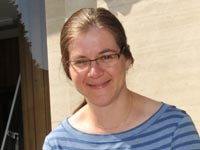A Matter of Life and Death

Dr Hazel Davey
14 September 2011
There can be few questions more fundamental than deciding whether an organism is alive or dead but for microbes at least the distinction is not always straightforward. IBERS lecturer Dr Hazel Davey published a paper showing how a population of yeast cells that initially appeared to be dead following exposure to an environmental stress, could in fact repair themselves. This work led to an invitation from Applied and Environmental Microbiology for her to write a review on the concept and measurement of viability in microbes.
The paper was published in the August issue as: Davey, H.M. (2011) Life, death, and in-between: meanings and methods in microbiology. Applied and Environmental Microbiology 77: 5571-5576. and was the most viewed article in August.
The review has been highlighted by Gemma Reguera, Assistant Professor at Michigan State University writing in the American Society for Microbiology "Small Things Considered" as “fantastic" and a "Beautiful read!”.
Dr Davey's research focuses on the use of flow cytometry to measure uptake of fluorescent stains. In many cases the extent of staining depends on the viability of the cell but in the paper she describes how cells in a microbial population often exhibit heterogeneous uptake of fluorescent stains and can thus be classified into more subpopulations than simply "alive" and "dead." She explains that the route from viable to dead is made up of many steps and while the extremes are relatively clear-cut, the reversibility of the steps and the moment of death are difficult to define.
Contact: hlr@aber.ac.uk



